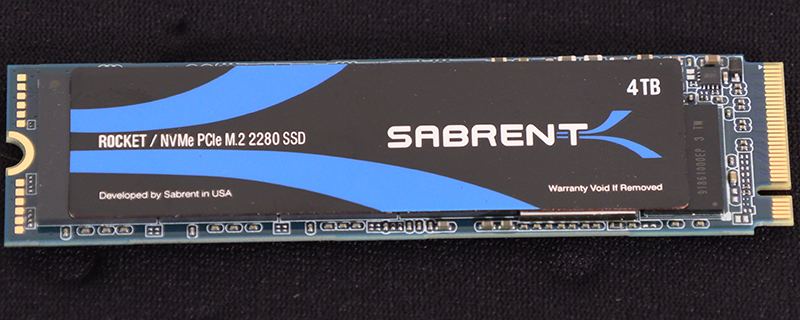Sabrent Rocket NVMe 2280 M.2 Review
Conclusion
There is a simplicity to the looks of an M.2 drive which belie their complexity under the hood. This was rarely more apparent that when we reviewed the Sabrent Rocket Q, a drive whose controller spent a lot of time writing data to QLC memory it had converted to SLC memory for speedy cache purposes, and then moving it from the SLC memory to the longer-term and slightly slower QLC NAND chips. It still rocked along at a fair old clip though.
The regular Sabrent Rocket combines the same Phison E12S controller, identical to the regular Phison E12 but in a smaller footprint package, with Western Digital’s BiCS4 96 layer 3D NAND and utilising the Nanya Technology DDR3L for the cache. This simplifying of things has had a profound effect upon the performance of the plain Rocket, out-performing the Rocket Q in pretty much all of our tests. Whenever you introduce architectural overheads you’ll always lower the maximum performance of something, and the easier job that the Phison E12S has moving data around on the Rocket 4TB demonstrates that.
No, it’s not OMG levels of improvement, but whereas the Rocket Q was often very fast, but now and again dropped away from the front runners, the Sabrent Rocket is regularly up amongst the fastest drives we’ve tested on the PCI Express 3.0 platform. Any time you can compare a drive favourably to the class-leading Samsung 970 EVO Plus you have to be doing something right, and Sabrent definitely have the formula perfected with the 4TB Rocket we have tested today.
More than perhaps many models on the market the capacity really is important to note here. This 4TB model is pure BiCS4 3D NAND, but even dropping down to the 2TB capacity sees the NAND switch to a blend of BiCS4 and BiCS3. Normally there is an understanding that the lower capacity drives don’t have quite the same maximum performance as the higher capacity options, and casting your eye over the Sabrent Rocket range shows that at 2TB there is some drop off, 1TB curiously seems slightly faster on paper, and then things drop off again until you hit the 256GB version which definitely won’t set your trousers on fire.
If there is a small downside it is the same that afflicted the Sabrent Rocket Q, namely that the drive slowed down to just 1 GB/s once we were writing a massive file to it. Around 70GB written in a big chunk saw those speeds. Naturally this is a test we’ve only just begun to do so we don’t know how the old drives faired, and equally you won’t, in the real world, be writing anything like that in one go unless you’re recording 4K video over a marathon gaming session.
However, in the format that we’re reviewing it, the 4TB model, the Sabrent Rocket is a very fast drive and should be immediately placed upon your shortlist of potential M.2 purchases.
Disucss the Sabrent Rocket NVMe 4TB on the OC3D Forums.




